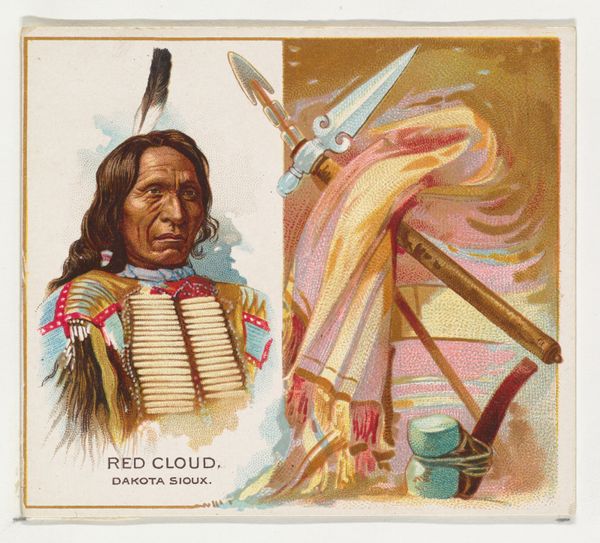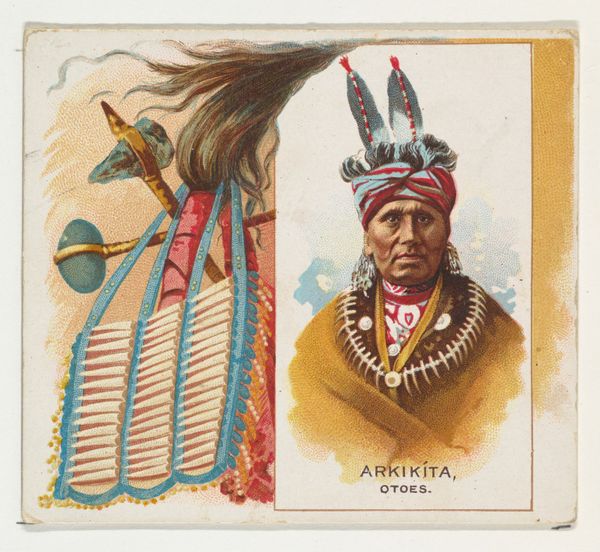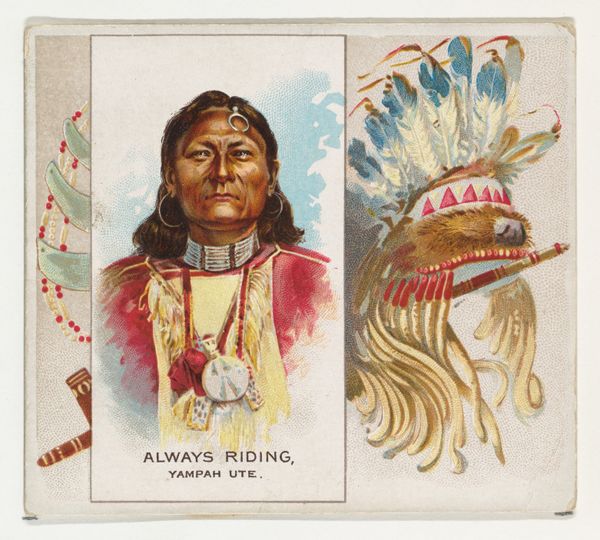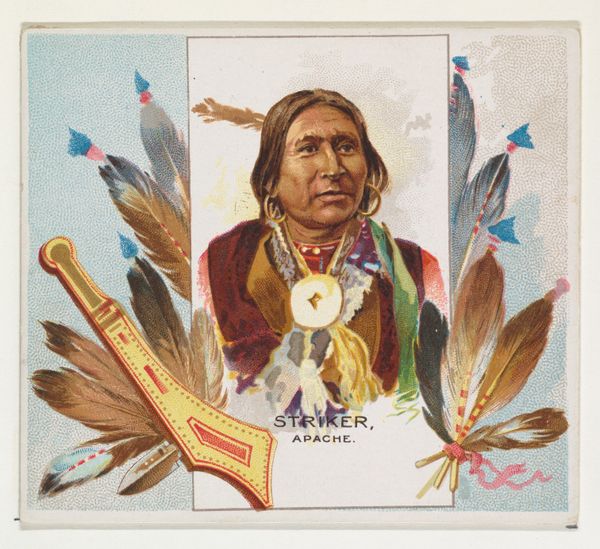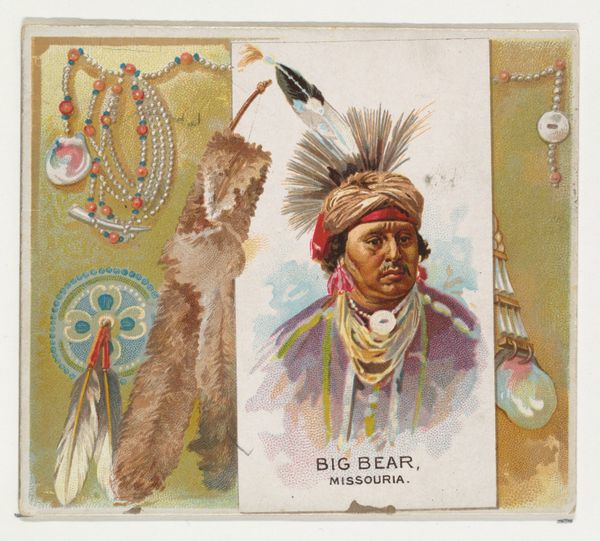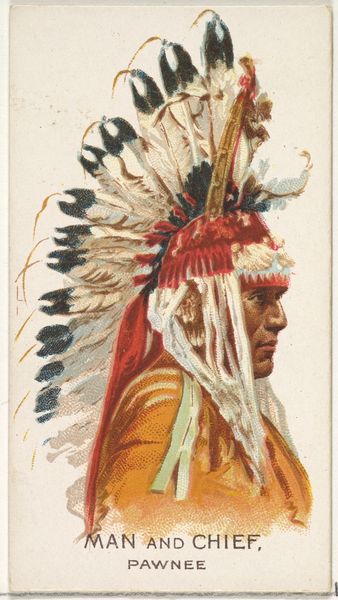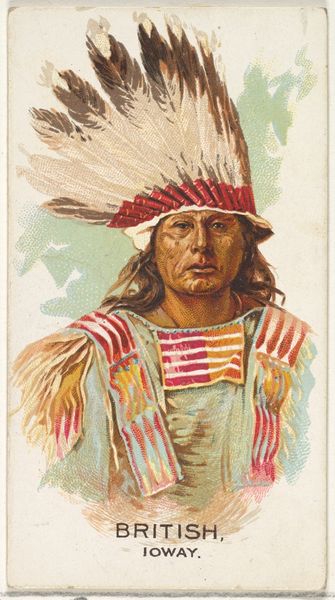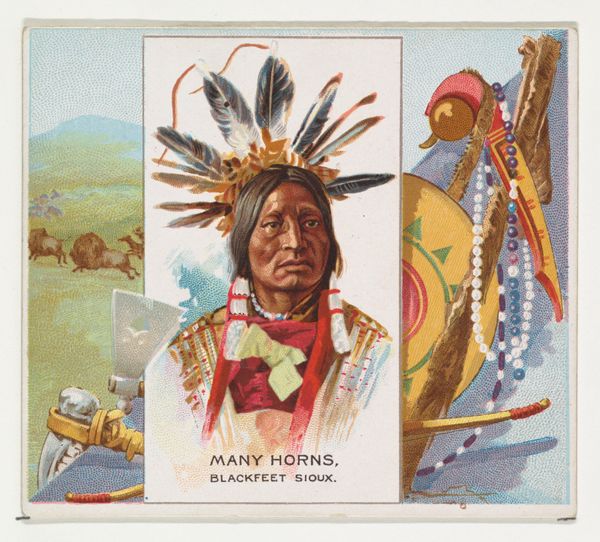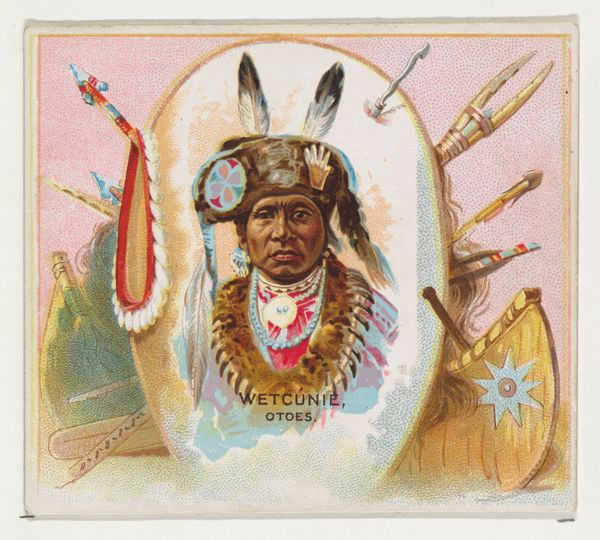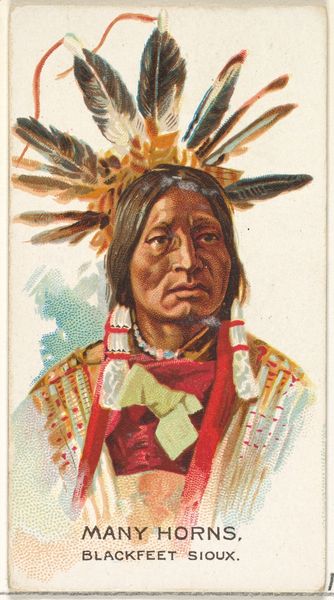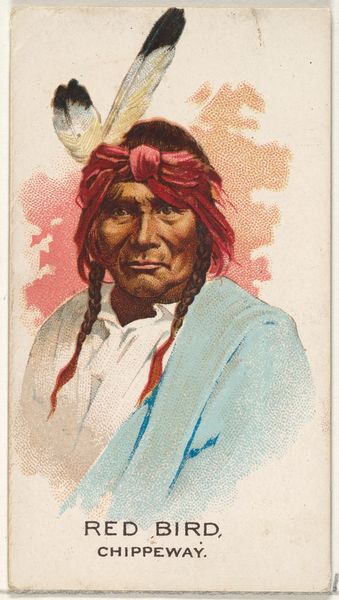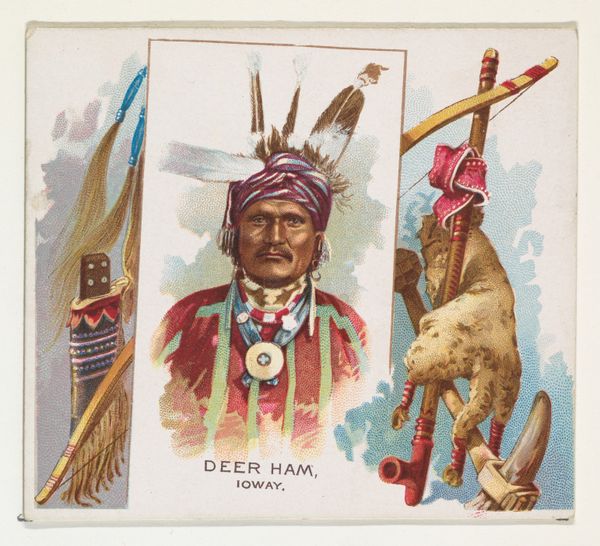
Red Bird, Chippeway, from the American Indian Chiefs series (N36) for Allen & Ginter Cigarettes 1888
0:00
0:00
Dimensions: Sheet: 2 7/8 x 3 1/4 in. (7.3 x 8.3 cm)
Copyright: Public Domain
Curator: Here we have "Red Bird, Chippeway, from the American Indian Chiefs series" published around 1888 as part of a series of cigarette cards by Allen & Ginter. It's a lithograph, after a watercolor, of a portrait paired with symbolic objects. Editor: My first impression is a sense of staged exoticism. The sharp division of the card, portrait on one side and accoutrements on the other, feels so deliberate. The materials tell a clear story: commercially printed lithograph on flimsy cardstock meant to be discarded. Curator: Precisely. It's fascinating to consider these cards as artifacts of a burgeoning consumer culture, promoting both cigarettes and a romanticized view of Native Americans. Note the industrial printing process, churning out countless copies to be consumed along with tobacco. How does this mass production affect the inherent meaning of Red Bird's image? Editor: The feathered headdress, the pipe, and even the spear aren't just props, but potent visual shorthand for ideas about Indigenous identity. They carry a weight of history and a charge of power. This juxtaposition between portrait and symbols echoes motifs we find across Indigenous art. It feels both reverential and appropriative. Curator: I find it compelling how the artists used watercolor as a means to recreate this imagery. There's a level of artifice here. Was this aesthetic adopted intentionally to imitate historical painting and suggest grandeur, or was the cheaper availability of this process a driver here? It does create a kind of tension. Editor: Absolutely. I agree that there's a significant tension. The tension of preservation of visual heritage colliding with cheap advertisement. But the way these icons have been reproduced is a history, too. The image has changed over time in public memory. Curator: A cultural memory mediated through commercial enterprises, and material production! It is so important to examine the purpose of creation in any culture to better understand its function. Editor: Seeing how Red Bird is distilled into a set of easily consumed symbols gives me a clear sense of what late 19th-century Americans valued, or thought they valued, about indigenous cultures. This piece has become an inadvertent vessel of memory about an entire civilization of which almost nothing is understood beyond a shallow symbolism.
Comments
No comments
Be the first to comment and join the conversation on the ultimate creative platform.
